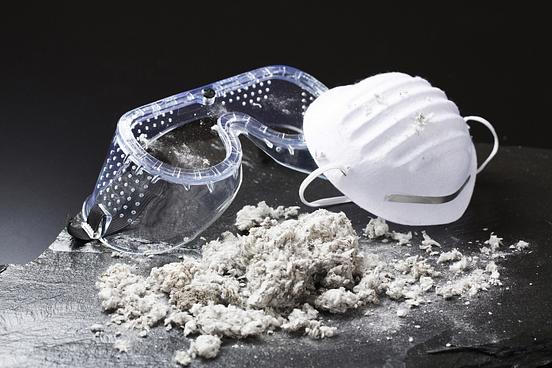Respirable crystalline silica (RCS) poses a deadly threat in the workplace. This guide will help employers understand what causes crystalline silica dust to spread in the air and how to stop it before it becomes a problem.

Silica dust, or quartz dust, is produced by silicon dioxide, a common chemical compound that makes up most of the sand deposits around the world. Because crystalline silica dust is often found in stone and clay, it makes its way into building materials, like brick, concrete, mortar, and tiles.
There are many processes that can lead to the formation of crystalline silica dust, including cutting, grinding, drilling, polishing, and any type of abrasive work.
In fact, respirable crystalline silica dust can be created by everyday foot traffic on your factory floors or the friction of your forklift tires on concrete.
The core issue with crystalline silica dust is its size – respirable crystalline silica particles are incredibly fine and light, meaning they can travel long distances.
In other words, anyone who works in or frequently visits a facility where these processes take place is at risk of breathing harmful crystalline silica dust into their lungs.
And the consequences are serious.
Breathing in respirable crystalline silica dust can lead to a host of health problems, including:
1. Lung cancer: The World Health Organization (WHO) reports that lung cancer is the second most common type of cancer, and it doesn't only impact smokers. Over 100 different studies have found a link between lung cancer and exposure to respirable crystalline silica dust.
2. Silicosis: You may have heard this called quartz dust lung. This illness is caused by inhaling silica dust, which is then deposited in the alveoli, leading to the formation scar tissue. As a result, those with silicosis experience shortness of breath and a chronic cough.
3. Kidney and autoimmune diseases: According to the US Occupational Safety and Health Administration (OSHA), “There is evidence that inhaling silica fume may increase the risk of rheumatoid arthritis and other autoimmune diseases. Indeed, an autoimmune mechanism has been postulated for some silica-related kidney diseases."
4. Other respiratory diseases: Asthma, chronic obstructive pulmonary disease (CPOD), pulmonary emphysema, and chronic bronchitis have all been linked to respirable crystalline silica dust.

Crystalline silica dust is toxic, but beyond that, it's classified as "ultrafine," a term used to describe particles that are so small, they are nearly invisible. Crystalline silica dust can spread throughout a workplace without anyone noticing, and it will stick to people's hair, clothes, and the belongings they carry with them in and out of the facility.
Simply reading this article shows you've already taken an important first step – now, you understand the true danger of respirable crystalline silica.
Perhaps you've already given your workers PPE and installed traditional extraction systems. These can make a difference, but they won't go nearly far enough to keep everyone safe.
Businesses need to eliminate respirable silica dust before it has a chance to settle or be inhaled, and the only way to do that is with an industrial air purifier.